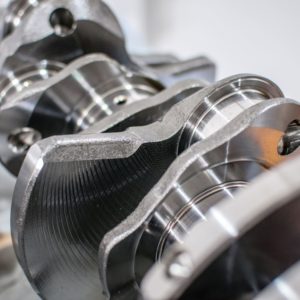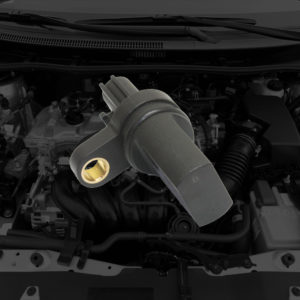Your vehicle’s powertrain control module (PCM) requires information about the crankshaft’s position to calculate important outputs, such as the ignition timing and variable valve timing. If there are problems with your vehicle’s CKP sensor, it can trigger the P2617 code or other related trouble codes.
What Does the P2617 Code Mean?
The P2617 code stands for Crankshaft Position Signal Output Circuit/Open. The PCM monitors the crankshaft position (CKP) sensor and its circuit for proper operation. If the module detects a problem, it might set the P2617 and other related codes. A malfunctioning CKP sensor can cause the engine to show various engine-related symptoms.

Note: The definition of code P2617 might be different depending on the vehicle manufacturer. Consult the appropriate repair manual or repair database for the exact code definition.
P2617 Code on Some Ford Vehicles
Some owners reported that the P2617 code can trigger in some Ford vehicles. In the 2006 Ford F-250 Super Duty Lariat with a 6.0-liter Powerstroke engine, for example, this diagnostic trouble code (DTC) is typically triggered along with other trouble codes such as the P0335 and the P2614. Most users report that their truck’s engine either refuses to start or runs rough.

Since the P2617 code is triggered along with other trouble codes, owners have reported that replacing either the CKP sensor or the camshaft position sensor (CMP) sensor will fix the issue.
What are the Common Causes of the P2617 Code?
The P2617 code’s issues can be caused by the following problems:
- Faulty CKP sensor
- Faulty PCM
- Faulty wiring
- Damaged tone ring
- Internal engine concern

What are the Common Symptoms of the P2617 Code?
The P2617 code’s underlying issues commonly causes the following symptoms:
- Illuminated check engine light
- Engine refuses to start
- Stalling
- Engine runs rough
- Poor fuel economy
How to Diagnose the P2617 Code
Diagnosing a P2617 might involve using a voltmeter to inspect the sensors and its wiring and connectors. The process can have various additional steps, depending on the vehicle’s year, make, and model. If you aren’t familiar with your vehicle, it’s best to have a certified mechanic do the job for you.
But if you think you can handle the task on your own, take a look at the video below to learn more about the diagnostic process.
How to Fix the P2617 Code
Attempting to fix the issues causing the P2617 code can be a frustrating and confusing task, especially without the right tools and technical information. If done incorrectly, it might even lead to more issues and a more expensive repair bill. Under these circumstances, bringing your vehicle to a trained professional might be the best way to resolve its issues.
Umbrella fixes don’t exist when it comes to fixing diagnostic trouble codes. So make sure to have the right information before you proceed to work on your vehicle. Chilton guides or an ALLDATA subscription contain vehicle-specific repair information, so you might want to check those out before you begin.
More About the Crankshaft Position Sensor
The CKP sensor is also a trigger that signals when the ignition coil is going to activate. It detects the crankshaft’s position by reading a toothed or notched wheel attached to the crankshaft. It then sends this information to the PCM, which interprets the the crankshaft’s position and rotation speed.
Any information provided on this Website is for informational purposes only and is not intended to replace consultation with a professional mechanic. The accuracy and timeliness of the information may change from the time of publication.















